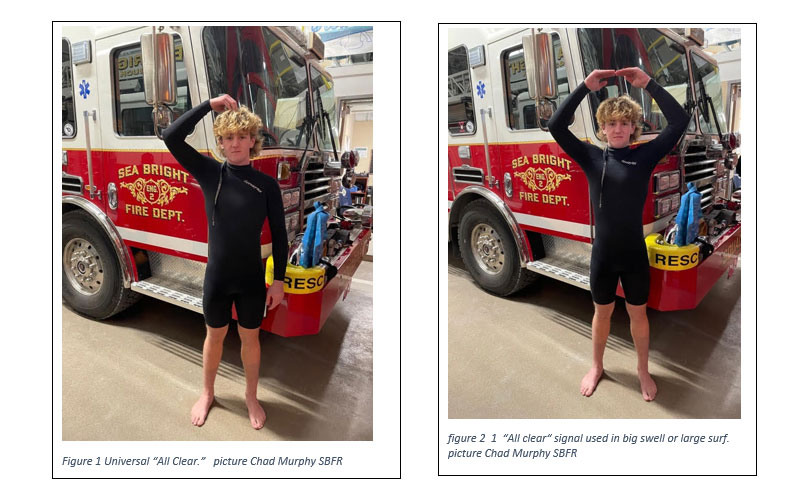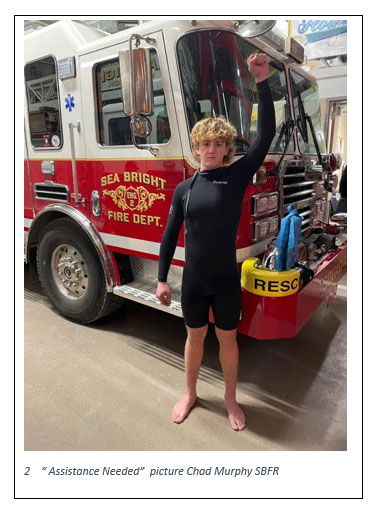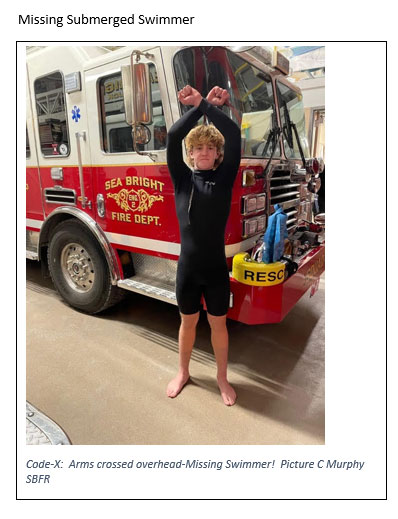It can be both taxing and irritating when you’re stuck in the head of a huge recirculating rip current with three stable victims. But when you’re stuck in the head of a rip in massive surf with a resuscitation case, it can be a life-and-death struggle for both victim and rescuer. If one were to be inclined to review after-action reports of major water rescue incidents, issues with communications are mentioned quite frequently. Communications are usually the first thing to unravel during complicated technical rescue operations and during large operations where multiple teams are involved.
The most reliable form of communications during a water rescue case is face-to-face, the same as any other rescue discipline. The next most effective form of nonverbal messaging is the use of arm signals. From today’s modern ocean lifeguards to the surf men from the 1800s, arm signals have always been a reliable way for rescuers who are in the water to communicate priority messages to their colleagues, who are usually on-shore, even while controlling a struggling victim.
- Water Rescue Tradecraft: The Sea Bright Tourniquet Technique
- Fundamentals of Open Water Lifesaving: Rescue and Resuscitation of a Drowning Victim
- Fundamentals of Open Water Rescue
Ocean lifeguards have long known that rookies carrying modern electronic communication devices around saltwater often ends in tears or an incident report. Portable electronics used in the marine environment have limited power and can often fail, but a simple $10 dollar plastic whistle is impervious to water and can communicate distress and danger during rescue operations over considerable distance. It is highly encouraged by everyone from the U.S. Coast Guard to Mexico’s Salvavidas to use whistles in conjunction with signaling.
This piece will review the most common universally accepted (almost worldwide) water rescue arm signals and the messages they convey. Where denoted each signal is consistent with National Fire Protection Association (NFPA) and U.S. Lifesaving Association (USLA) curriculum as well as basic SCUBA training curriculum.

All Clear: This signal is used to relay the message that everything is under control and no assistance is required. 1,2,3

Assistance Needed: One arm straight up signals a request for help 1,2,

Resuscitation Case: This signal relays the message that the victim is incapacitated, and the rescuer needs assistance. The rescuer’s arm is waved back and forth with the elbow kept as straight as possible. Once back-up rescue personnel enter the water, those left on shore prepare to receive a resuscitation case including prepping medical equipment and requesting EMS. 1,2

Missing Swimmer or Submersed Swimmer: This signal is used when a victim has submerged under the water. Using this arm signal in conjunction with a long, drawn-out whistle blast relays a message of urgency. In America, most major beach lifeguard services have labeled this signal, and the ensuing recovery operations, as a Code-X. 2
Nothing gives an overtasked, overwhelmed rescuer more solace than signaling for assistance towards Shore than to see a return signal from a colleague running towards the water. “See a signal/return a signal” is a saying that summarizes the signal procedure itself; it means that whatever signal is sent by either position, that same signal is returned as acknowledgement, no matter who sent the signal. And though there are only four rudimentary arm signals, the messages they convey speak a thousand words.
Finally, I want to invite any water rescue technician or open water lifesaver who is interested in putting these arm signals to work to attend the water rescue hands-on training (HOT) course being offered at this year’s FDIC HOT program. I guarantee that you will become exceptional at using the arm signal for resuscitation case.
References
- Water Rescue 2nd edition, NFPA Standards and Practices 1006 and 1670, Steve Trienish. Published 2017, PSG JBL
- Manual of Open Water Lifesaving 3rd edition, USLA Manual B, Chris Brewster. Pearson Publishing. 2017 ISBN-13-978-1-323-58456-9.
Mike Hudson has been an ocean lifeguard-paramedic since 1990 and has worked as a street level paramedic and EMS instructor for almost as long. He is a former Navy Corpsman and taught the in-house SOT EMT and paramedic courses at NSWG-1 (West Coast SEAL and Marine Force Recon teams) for almost 10 years. He served as an ocean lifeguard and paramedic in San Diego, California, and Panama City Beach, Florida, for more than 18 years before spending another four years in the Rocky Mountains as a HEMS SAR paramedic in Gunnison and Montrose counties. Since 2014, during the summer, Mike commands a nationally certified surf/river RWC response team and directs municipal open water and surf lifeguard operations for two separate beach towns in Monmouth County, New Jersey. In the winter, Mike works as a paramedic rescue diver coordinating marine safety and medical operations for several major networks that create high-risk productions involving apex predators, including extensive work since 2003 for Shark Week and Shark Fest. He is a technical rescue contributor for Fire Engineering magazine and has a recurring column in JEMS called pre-hospital tradecraft. As a hobby, Mike produces a nationally recognized public safety/technical rescue podcast aptly titled “Lifeguards 10-8.”

